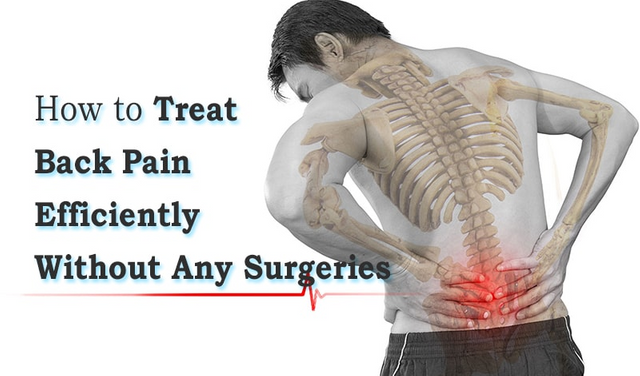
Definition of Back Pain
Back pain is one of the most common diseases. Most people experience back pain at least once in their life. Fortunately, back pain is a condition that can be prevented and relieved. If prevention fails, simple home care and proper posture can often cure back pain in a few weeks and keep it working. Surgery is rarely needed to treat back pain.
Risk factors for back pain
Anyone can experience back pain, even children and teenagers. There are several risk factors that are vulnerable to back pain, such as age over 30 or 40, lack of exercise, being overweight, certain diseases, the process of lifting heavy loads that are not correct, psychological conditions and smoking.
Causes of back pain
Back pain that appears suddenly and does not last more than six weeks (acute) can be caused by falling or lifting heavy loads. While back pain that lasts more than three months (chronic) is less common than acute pain.
The condition of back pain usually affects the muscles or stretching of ligaments, usually due to frequent heavy lifting or sudden and uncomfortable movements. It could also be due to a broken disc, which normally acts as a buffer between the bones (vertebrae) in the spine.
If there is a specific cause or trauma, the soft material inside the disc may swell or break and compress the nerve. Other causes of back pain are arthritis, scoliosis or osteoporosis.
Symptoms of back pain
Signs and symptoms of back pain include pain in the surrounding muscles, pain that feels sharp, worsens when you bend over, get up, stand or walk, and get better at bedtime.
Most backaches gradually improve with home care and personal care, usually in a few weeks. If it has not improved after this time, the person should go to the doctor for a more detailed examination.
Diagnosis of back pain
To diagnose back pain, the doctor will first examine the victim's back and assess their ability to sit, stand, walk and lift the leg. The doctor may also ask the patient to evaluate the pain on a scale of zero to 10. This evaluation helps determine where the pain comes from, how much the person can move before the pain forces him to stop and if there are signs of spasms muscle The physical exam is also useful to rule out more serious causes of back pain.
If the doctor suspects that there are certain conditions that cause back pain, the doctor may recommend supporting tests. Research is usually used to establish a diagnosis of back pain, which includes: X-ray photos, to see arthritis or broken bones.
Magnetic resonance imaging or computed tomography to produce images that may represent problems with a disc or hernia with bones, muscles, tissues, tendons, nerves, ligaments and blood vessels.
While a complete blood test can help determine the presence of infection or other conditions that can cause pain.
In rare cases, a bone scan may be performed to look for bone tumors or compression fractures caused by osteoporosis.
While EMG measures electrical impulses generated by nerves and muscle responses to confirm nerve compression caused by herniated disc or narrowing of the spinal canal (spinal stenosis).
Back pain treatment

Nonsteroidal anti-inflammatory drugs (NSAIDs) can relieve acute back pain. It is recommended not to use it too often, as it can cause serious side effects. Other medications may be used if the cause of muscle tension is a muscle relaxant, but it can make you feel dizzy and sleepy.
Always use most comfortable recliner for back because the main cause of back pain is wrong sitting posture and a good recliner or ergonomic office chairs are best options for back pain suffer.
Topical pain relievers in the form of creams, ointments or ointments rubbed in the area of pain may also be an option.
Narcotics and antidepressants may be given if there are special indications of the doctor. This medicine is not sold freely, so it can only be obtained with a doctor's prescription. Another step that can be done is to provide an anti-inflammatory injection at the site of pain.
These steroid or anti-inflammatory injections help reduce inflammation around nerve roots, but pain relievers usually last less than a few months.
Back pain prevention
How to prevent back pain is to improve physical condition and learn and practice proper posture. Doing low-impact aerobic exercise or physical activity that does not compress or vibrate the back is also good for increasing strength and endurance in the back and allowing the muscles to function better. Walking and swimming are good options.
The person also needs to develop muscle strength and flexibility, maintain a healthy weight, quit smoking, avoid torsion or load movements in the back, to avoid back pain.
When to see a doctor?
In rare cases, back pain means a serious medical problem. Contact your doctor immediately if back pain is accompanied by fever and injuries elsewhere.